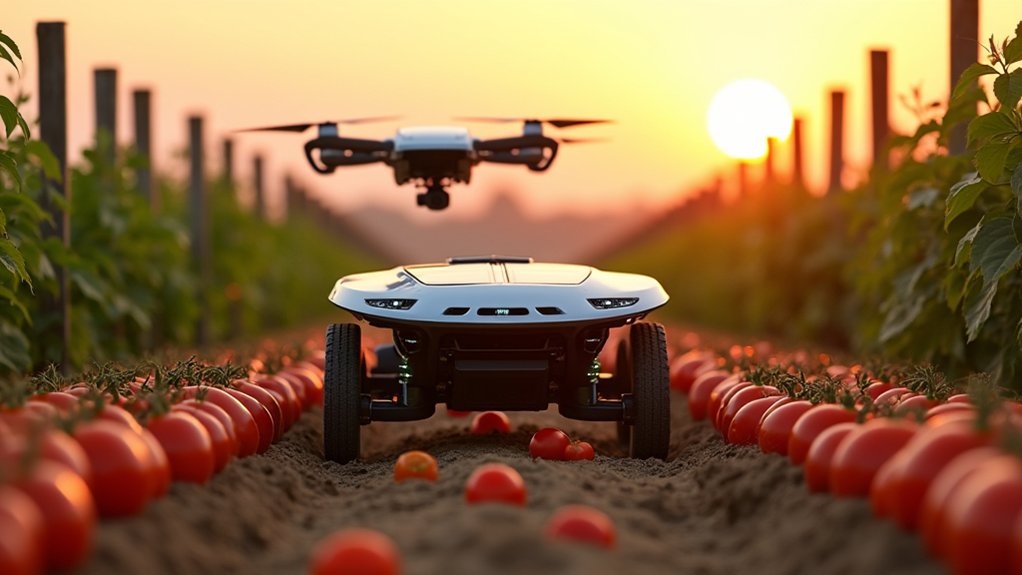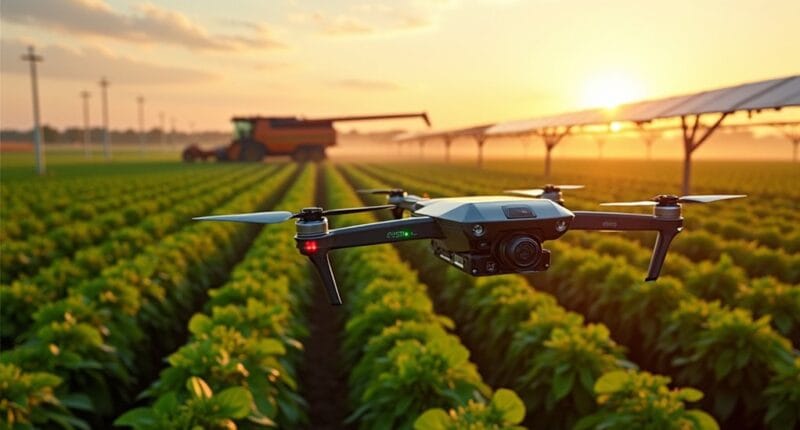Agriculture’s tech revolution is mind-blowing. Today’s farms look more like Silicon Valley startups, with AI systems monitoring everything from soil moisture to cow health. Only 3% of Americans still farm, but they’re crushing it – AI users report 20% better efficiency. Drones patrol fields like mechanical scarecrows while robots handle the grunt work. Climate change? AI’s got that covered too, with precision agriculture treating each acre uniquely. The future of farming isn’t just different – it’s unrecognizable.

While many Americans still picture farming as a quaint occupation filled with overalls and pitchforks, modern agriculture is undergoing a technological revolution that would make Silicon Valley jealous. With only 3% of Americans working in agriculture these days, farms have no choice but to embrace the machine uprising. And what an uprising it is.
Modern farms aren’t just growing food – they’re cultivating a tech revolution that’s transforming agriculture into Silicon Valley’s newest frontier.
The numbers tell a striking story. Seventy percent of farmers using AI have seen their operational efficiency skyrocket by 20%. Not bad for a bunch of algorithms. Meanwhile, 90% of agricultural workers are bracing themselves for AI and data analytics to completely transform their roles within five years. Welcome to farming’s brave new world.
Gone are the days of eyeballing a field and hoping for the best. Today’s farms deploy armies of sensors, drones, and AI systems that monitor everything from soil moisture to cow moods. These digital overseers can spot irrigation leaks, optimize pesticide use, and even predict crop yields with uncanny accuracy. They’re like having thousands of tireless farmhands who never need a lunch break. High-voltage electrocution robots are now eliminating weeds from roots to tops, providing a revolutionary alternative to traditional herbicides.
Climate change has farmers worried – more than 80% cite it as their top concern. But AI is helping them adapt to Mother Nature’s mood swings by analyzing weather patterns and fine-tuning irrigation strategies. The new approach focuses on precision: treating each acre differently instead of bombing entire fields with the same resources. Global spending on smart agriculture is expected to reach $15.3 billion by 2025.
Security has gone high-tech too. Automated systems now watch for trespassers, both human and animal, while drones patrol overhead like mechanical scarecrows. The real magic happens in the supply chain, where AI helps get fresher crops to market faster and tracks products from seed to store shelf.
The robot revolution isn’t complete yet – only 54% of agricultural workers plan to invest in farm robotics next year. But with labor shortages worsening and technology getting smarter, the writing’s on the barn wall. Traditional farming isn’t just changing – it’s being reimagined from the ground up. Those pitchforks? They’re being replaced by processors.





